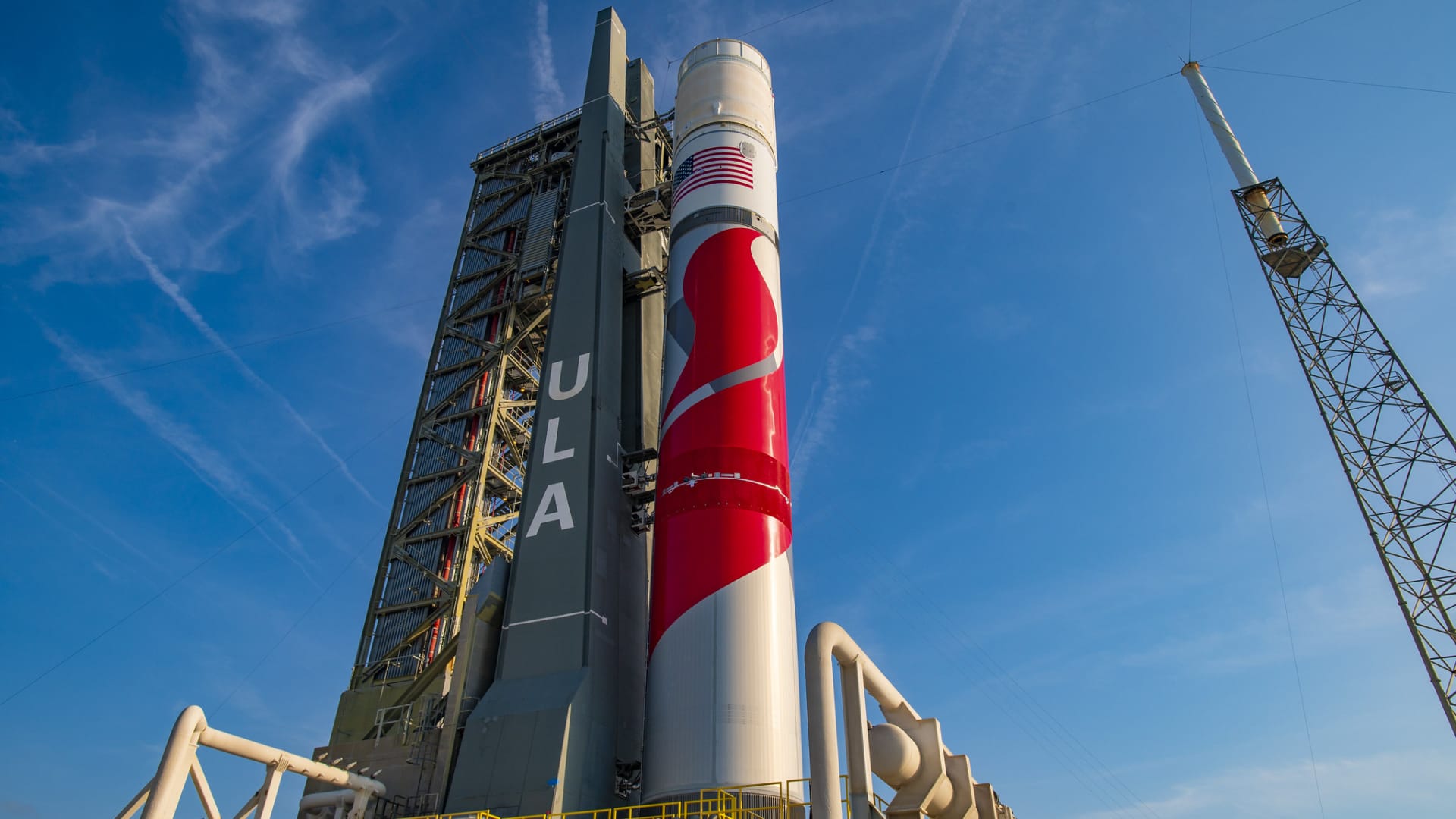The Vulcan rocket for the Cert-1 mission is currently undergoing testing at SLC-41 in Cape Canaveral, Florida. This important update comes from CNBC’s Investing in Space newsletter, which provides a comprehensive view of the business of space exploration and privatization. Delivered directly to your inbox, CNBC’s Michael Sheetz curates the latest news, investor updates, and exclusive interviews on the most significant companies making strides in the industry. Don’t miss out on this valuable resource – sign up now to receive future editions.
Let’s delve into the fascinating world of rocket engine testing and gain some insights in light of the recent explosion of a BE-4 rocket engine during Blue Origin’s testing in Texas. Understanding the three main phases of rocket engine testing – Development, Qualification, and Acceptance – is crucial. A highly experienced industry specialist recently provided a helpful breakdown of how these phases differ. Here’s a summary:
1. Development: This phase involves testing prototypes and smaller scale versions of the engine, pushing them to their limits to identify flaws and limitations. Failures are expected and accepted as part of the process.
2. Qualification: Once the design is essentially finished, this phase focuses on verifying the engine’s ability within specified margins. While the destruction of an engine might occur, it shouldn’t be a common occurrence.
3. Acceptance: In this phase, a production engine is thoroughly checked for a launch. It may be pushed slightly beyond what is necessary for a successful launch, but it’s not subjected to the rigorous testing like in the previous phases. The primary goal is to ensure that the engine is ready and reliable.
While it’s not necessary to report on every rocket engine failure, it’s important to note that the BE-4 engine was already years behind schedule and experiencing setbacks even before this explosion. Although losing an engine during testing is preferable to a failure during a launch, dismissing the loss of expensive production hardware is overly dismissive and fails to acknowledge the setbacks it causes.
The consequences of this incident are particularly significant because United Launch Alliance (ULA) relies on Vulcan to successfully complete two launches before the U.S. Space Force approves it for valuable national security missions. With SpaceX dominating the launch market and concerns of a monopolistic market, ULA’s upcoming Space Force missions rely on Vulcan. It’s uncertain if the BE-4 incident will impact Cert-1, but it raises questions about Cert-2. ULA CEO Tory Bruno remains optimistic that the timeline for Cert-1 will not be affected. However, further investigation into the BE-4 engine failure, checking future production engines for similar flaws, and testing the replacements will be necessary.
As one propulsion engineer stated, “You learn a lot in development testing. You learn a little bit in qualification testing. Blessed be they who continue to learn in acceptance testing.” It’s vital to remember that space exploration is a complex endeavor with various challenges. Simply dismissing it with phrases like “Space is hard” fails to acknowledge the dedication, effort, and continuous learning required in this field.
In other news:
– Astranis signs a deal to provide the Philippines’ first dedicated internet satellite through a long-term agreement with HTechCorp. The satellite is expected to launch next year, benefiting up to two million people.
– China’s Landspace becomes the first company to successfully orbit a methane-fueled rocket called Zhuque-2. The achievement was verified by U.S. Space Force tracking data.
– Representatives from Saudi Arabia and China meet to discuss space cooperation, aiming to strengthen political and economic ties between the two nations.
– Maxar introduces the Maxar Geospatial Platform to broaden access to its Earth observation capabilities, offering imagery, 3D models, change detection, and more.
– Virgin Galactic announces a target schedule for its second commercial mission, “Galactic 02,” which plans to carry three private passengers starting from August 10.
– NASA cancels its Janus small satellite asteroid mission, storing the spacecraft for future use, and announces new contracts for Axiom and Collins to develop spacesuits for low Earth orbit and lunar surface use, respectively.
– Astra establishes its subsidiary, Astra Spacecraft Engines, autonomously to enhance its spacecraft development efforts by allowing greater flexibility in hiring and financing.
– Redwire plans to construct a microgravity payload development facility in Indiana, beginning the construction in the fourth quarter.
– Orbex, a UK rocket builder, expands its facilities in Scotland and Denmark to increase rocket production and propulsion manufacturing capacity.
In the business landscape:
– Dish and EchoStar are reportedly considering a potential merger, which would reunite the two companies after their separation 15 years ago.
– Ball Aerospace is up for sale, attracting interest from private equity and defense firms such as Blackstone, Veritas Capital, BAE Systems, General Dynamics, and Textron.
– Satellite intelligence venture, HawkEye 360, raises $58 million for further system development and enhanced analytics capabilities, primarily focusing on supporting high-value defense missions.
– Satellite propulsion startup, Benchmark Space Systems, secures $33 million in funding to continue its operations.
– HawkEye 360 is awarded a contract to provide monitoring services for fishing activities in Australia, which is part of a program aimed at improving maritime awareness.
– Viasat experiences a significant stock decline due to an issue with the deployment of the reflector on its ViaSat-3 Americas satellite.
– Astra’s board approves a reverse stock split and plans to raise capital through different means, including an “at the market” stock offering.
In exciting news, retired astronaut and former SpaceX director, Garrett Reisman, joins Vast as a human spaceflight advisor, further contributing his expertise to the ever-evolving field of space exploration.
Denial of responsibility! VigourTimes is an automatic aggregator of Global media. In each content, the hyperlink to the primary source is specified. All trademarks belong to their rightful owners, and all materials to their authors. For any complaint, please reach us at – [email protected]. We will take necessary action within 24 hours.


